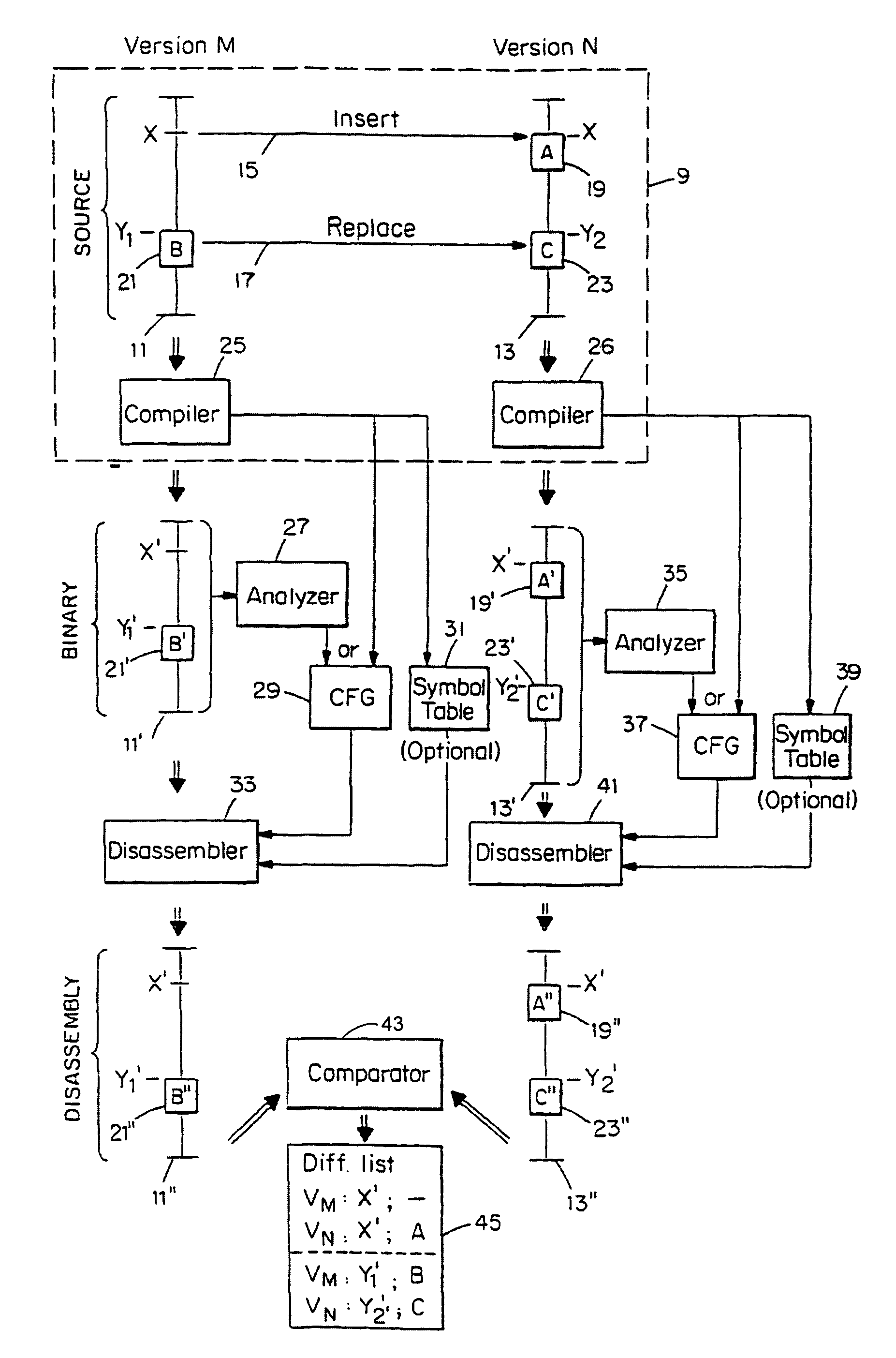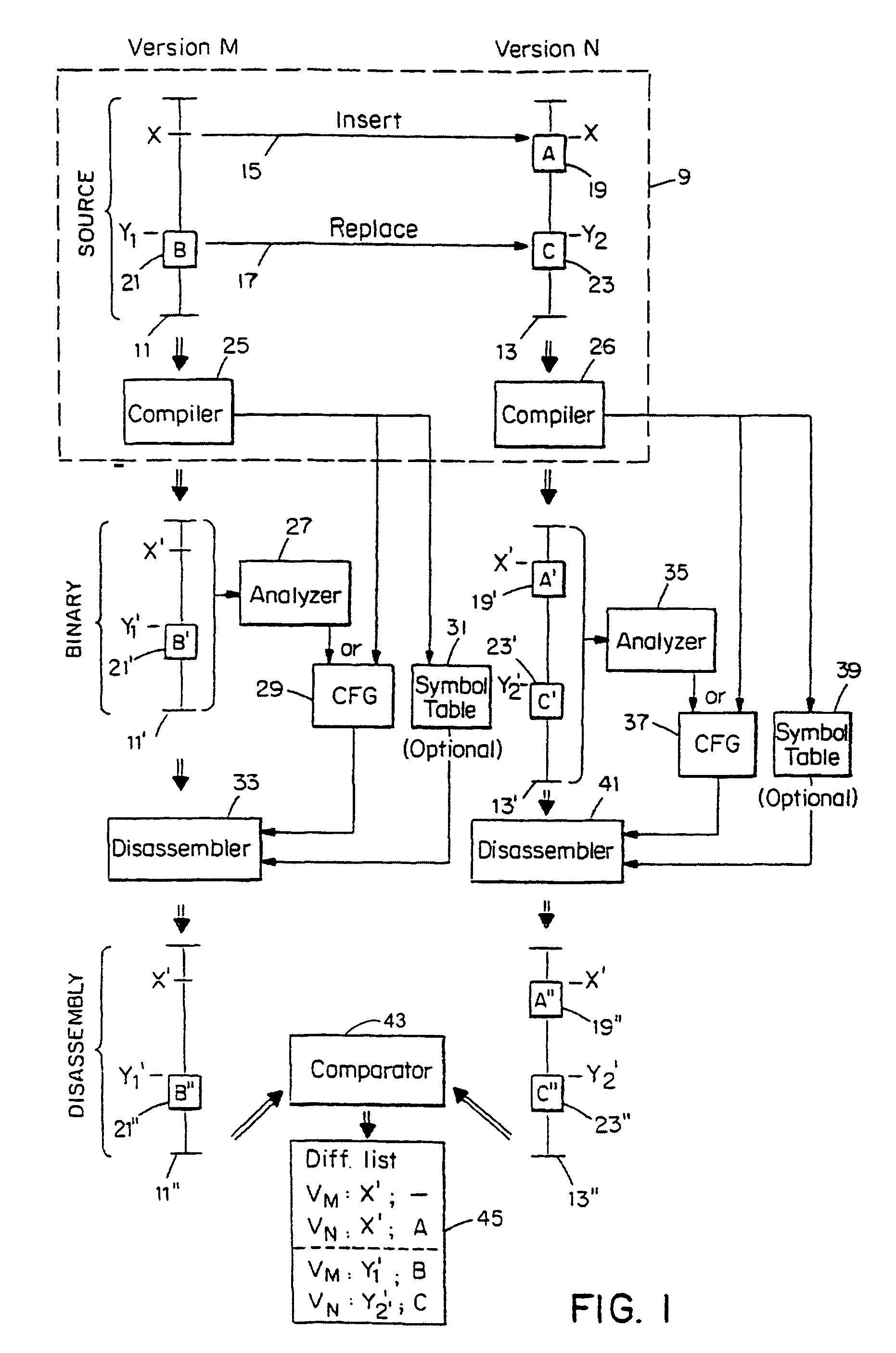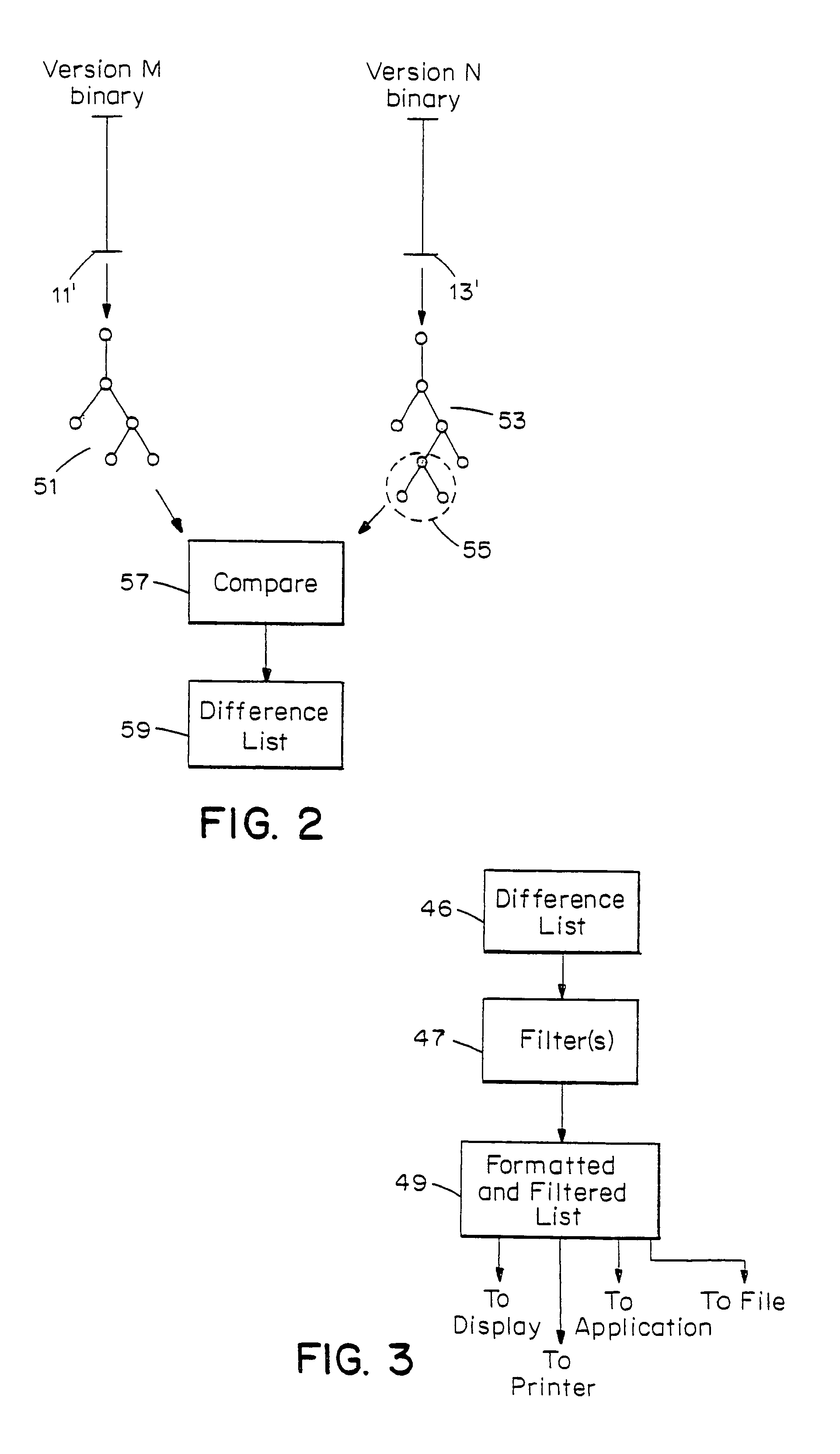Method for determining the degree to which changed code has been exercised
a technology of code and degree, applied in the field of method for determining the degree to which changed code has been exercised, can solve the problems of insignificant differences and overwhelming number of false positives
- Summary
- Abstract
- Description
- Claims
- Application Information
AI Technical Summary
Benefits of technology
Problems solved by technology
Method used
Image
Examples
Embodiment Construction
[0026]A description of preferred embodiments of the invention follows.
[0027]FIG. 1 is a schematic flow diagram illustrating an embodiment of the present invention. Assume that initially, source code 11, shown as a line representing a sequence of source-level instructions, exists for some program. The source code 11 can be written in a high-level language such as C, Pascal, Fortran, etc., or in a lower level language such as assembly language.
[0028]Typically, the program source 11 is processed by a compiler 25 (or an assembler if the source code is in assembly language) to produce an executable program binary 11′, comprising machine-readable instructions. The executable 11′ can then be used for testing or production, or for some other purpose.
[0029]Eventually, the program source 11 is updated, due to, for example, bug fixes, enhancements, introduction of new features, deletion of obsolete features, etc. In the illustrative example of FIG. 1, the first or baseline version 11, Version ...
PUM
 Login to View More
Login to View More Abstract
Description
Claims
Application Information
 Login to View More
Login to View More - R&D
- Intellectual Property
- Life Sciences
- Materials
- Tech Scout
- Unparalleled Data Quality
- Higher Quality Content
- 60% Fewer Hallucinations
Browse by: Latest US Patents, China's latest patents, Technical Efficacy Thesaurus, Application Domain, Technology Topic, Popular Technical Reports.
© 2025 PatSnap. All rights reserved.Legal|Privacy policy|Modern Slavery Act Transparency Statement|Sitemap|About US| Contact US: help@patsnap.com



